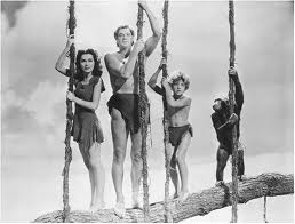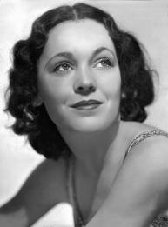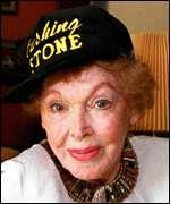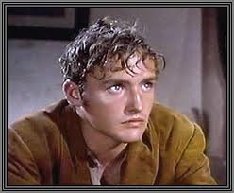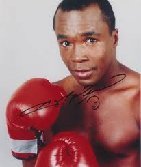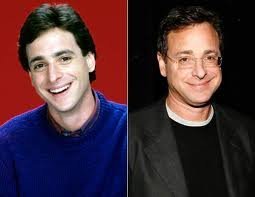The 1st Academy Awards ceremony, presented by the Academy of Motion Picture Arts and Sciences (AMPAS) and hosted by AMPAS president Douglas Fairbanks, honored the best films from 1 August 1927 to 31 July 1928 and took place on May 16, 1929, at a private dinner held at the Hollywood Roosevelt Hotel in Los Angeles, California. Tickets cost $5 ($79 in 2021, considering inflation); 270 people attended the event, which lasted 15 minutes. It is the only Academy Awards ceremony not broadcast on either radio or television; a radio broadcast was introduced for the 2nd Academy Awards.
During the ceremony, AMPAS presented Academy Awards – later to be colloquially known as "Oscars" – in 12 categories. The winners had been announced three months ahead of the ceremony. Some nominations did not reference a specific film, such as Ralph Hammeras and Nugent Slaughter, who were nominated for Engineering Effects, a category that was dropped the following year (along with those for Unique and Artistic Production, Best Director (Comedy), and Best Title Writing). Unlike later ceremonies, an actor could be awarded for multiple films: Emil Jannings won Best Actor for his work in both The Way of All Flesh and The Last Command, while Best Actress winner Janet Gaynor was honored for three films. Charlie Chaplin and Warner Brothers each received an Honorary Award.
Major winners at the ceremony included 7th Heaven and Sunrise, with three awards apiece (the latter winning for Unique and Artistic Picture), and Wings receiving two awards, including Outstanding Picture. The following year, the Academy dropped Unique and Artistic Picture and decided retroactively that the award won by Wings was its highest honor.
Background
In 1927, the Academy of Motion Picture Arts and Sciences (AMPAS) was established by Louis B. Mayer, the founder of the Louis B. Mayer Pictures Corporation, which then would be joined into Metro-Goldwyn-Mayer (MGM). Mayer's purpose in creating the award was to unite the five branches of the film industry: actors, directors, producers, technicians, and writers.[7] Mayer commented on the creation of the awards "I found that the best way to handle [filmmakers] was to hang medals all over them ... If I got them cups and awards, they'd kill them to produce what I wanted. That's why the Academy Award was created". Mayer asked Cedric Gibbons, art director of MGM, to design an Academy Award trophy. Nominees were notified through a telegram in February 1928. In August 1928, Mayer contacted the Academy Central Board of Judges to decide winners. However, according to the American director King Vidor, the voting for the Academy Award for Best Picture was in the hands of the AMPAS founders: Mayer, Douglas Fairbanks, Sid Grauman, Mary Pickford, and Joseph Schenck.
Ceremony
The ceremony was held on May 16, 1929, at the Hollywood Roosevelt Hotel, located in Los Angeles. It consisted of a private dinner with 36 banquet tables, where 270 people attended and tickets cost $5 (equivalent to $78.91 in 2021). Actors and actresses arrived at the hotel in luxury vehicles, where many fans attended to encourage celebrities. The ceremony was not broadcast on radio,[4] and was hosted by AMPAS director Fairbanks during a 15-minute event.
If you want to read a lot more, go here: https://en.wikipedia.org/wiki/1st_Academy_Awards
These are a real Southern specialty, and if you've never had the chance to try them, you'd better get ready to eat more than one! These Tangy Pickled Eggs are an old-fashioned Southern recipe that is now easy to make at home! Just a few simple steps and simple ingredients and you'll be making Tangy Pickled Eggs in no time!
- 12 eggs
- 3 cups white vinegar
- 1/2 cup water
- 1 garlic clove, thinly sliced
- 2 tablespoons sugar
- 1 tablespoon pickling spice
- 1 teaspoon salt
- 1/2 teaspoon black pepper
- Place eggs in a large saucepan with enough water to cover them; bring to boil over high heat. Remove from heat, cover, and let sit 20 minutes. Drain hot water then run cold water over eggs. Let eggs cool 5 to 10 minutes, then peel. Place in a large canning jar or bowl and set aside.
- In large saucepan over high heat, combine remaining ingredients; bring to boil. Allow to cool slightly then carefully pour mixture over eggs. Cover and chill overnight before serving.
1995 – Shawn Nelson steals a tank from a military installation and goes on a rampage in San Diego resulting in a 25 minute police chase. Nelson is killed by an officer after the tank got stuck on a concrete barrier and tried to break free.
2004 – The first legal same-sex marriages in the U.S. are performed in the state of Massachusetts.
2006 – The aircraft carrier USS Oriskany is sunk in the Gulf of Mexico as an artificial reef.
2007 – Trains from North and South Korea cross the 38th Parallel in a test-run agreed by both governments. This is the first time that trains have crossed the Demilitarized Zone since 1953.
2013 – Two Metro-North commuter trains collide near Bridgeport, Connecticut injuring at least 72 people.
And births this date include...
1936 – Dennis Hopper, American actor and director (d. 2010)
1956 – Sugar Ray Leonard, American boxer
1956 – Bob Saget, American actor (d.2022)
1962 – Craig Ferguson, Scottish actor and comedian
On May 17th, National Idaho Day recognizes the 43rd state to join the union.
A wave of settlement made its way into The Gem State following in the footsteps of the Corps of Discovery. Miners, traders, and missionaries made their way West into the territory of the Nez Perce, Shoshone, and Bannock peoples. On July 3, 1890, the state became the 43rd state of the United States.
The state is dominated by the Rocky Mountains range. Snake River winds its way through the rugged western border of the state carving the deepest river gorge in North America. Hells Canyon National Recreation Area provides spectacular views of the dramatic landscapes the Snake River took thousands of years to sculpt.
Idaho doesn’t lack scenery. Take any byway, and the next turn will reveal a whole new vista to observe. For example, Craters of the Moon National Monument & Preserve will seem to erupt before your eyes. This vast lava field formed from ancient volcanic activity.
While exploring Idaho, don’t forget to investigate Hagerman’s Fossil Beds. Excavations of these well-preserved fossils have fascinated paleontologists for generations. If there is an equine interest, be sure to study the Hagerman Horse, too!
Beyond the fossils, entire cityscapes of stone appear. The City of Rocks encountered by native peoples, pioneers, and modern-day adventurers became a kind of waystation or landmark for those who were westward bound.
Inventors seem to like Idaho. Beyond the list of patents for improvements to printing presses and railroad technology, Idaho is the home of the television. Philo Farnsworth invented the necessary technology that brought the small screen to the mass market.




